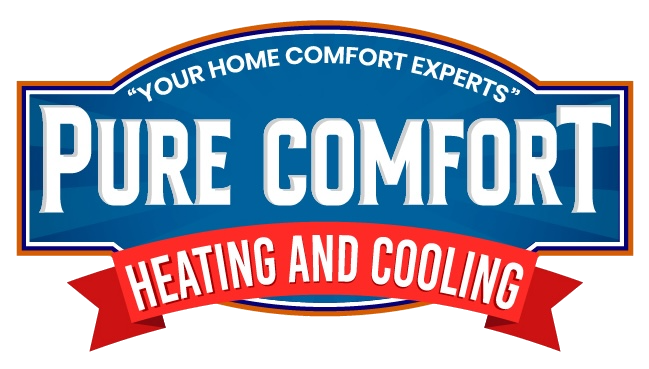
The global growth of COVID-19 has likely turned your regular routine all over the place.
When times feel uncertain you can take peace in knowing your residence is your safe retreat. You’re likely spending more time there nowadays. As a result, your indoor air quality is now more crucial than ever.
Did you realize we can install indoor air quality products in your house that offer hospital-grade filtration? These options can eliminate bacteria from your air, as well as allergens, odors and volatile organic compounds (VOCs).
Modern homes are securely airtight, which is great for energy efficiency. But it also means your inside air may be worse than the air outside. In actuality, the EPA says it can be two to five times worse than outdoors. This could lead to issues since we spend about 90% of our days inside.
There are many elements that can lead to poor indoor air quality, like cleaning products and air fresheners. These might cause headaches and worsen allergies and asthma.
There’s a combination of things you can do to better your air quality. Some include upgraded air filters, an air purification system or an ultraviolet (UV) germicidal light.
Not certain which option is right for your house? Our expert techs can perform an indoor air quality audit. Based on the results, we can then advise you on the best choice for your household’s unique needs.
Continue reading to discover more about the air quality products we have.
Air Filtration
When browsing air filters, it’s important to consider the MERV rating, or Minimum Efficiency Reporting Value. This gauges how effectively it filters air.
One of the most ordinary and most economical filters, flat fiberglass filters, rank between 1 and 4 on the MERV register. Pleated filters are somewhat better, ranking between 8 and 12.
We advise upgrading to no less than MERV 13, for instance the HC13 Media Air Cleaner, for the optimal outcome. This filter delivers cleaner air while reducing energy use.
High Efficiency Particulate Air (HEPA) filters are deemed the gold standard in air filtration, since they’re usually used in hospitals. They’re effective at trapping 99.97–99.99% of indoor pollutants, like pollen, pet dander and smoke.
Ahead of buying an enhanced filter, reach us at 630-313-2509. Our pros can help you choose the most ideal option for your system.
Air Purification
Lennox provides some of the greatest air purification systems you can get. PureAir™ S and Healthy Climate™ PureAir Air Purification Systems offer hospital-grade filtration while managing all kinds of indoor air contaminants.
These powerful units can take care of:
- 99.9% of allergens, like pollen, dust and pet dander.
- 95% of bacteria-sized particles, including ones that contribute to strep throat.
- 50% of VOCs and odors within 24 hours.
UV Germicidal Lights
A UV germicidal light is added inside your comfort system. Its strong rays eliminate bacteria and mold within seconds.
If your family struggles with allergies or asthma, this unit may offer relief. Especially if you are in a muggy climate where bacteria and mold grow quickly.
This light also has an added advantage for your heating and cooling unit. It could help it run longer and run more efficiently, as it keeps the internal components clean.
Our air quality engineers suggest installing one of these lights with an improved filter, such as our Carbon Clean 16® Media Air Cleaner, for the best outcome. This filter provides industry-leading MERV 16 filtration combined with carbon-coated fibers to trap particles in your house’s air. It does all of this without decreasing your heating and cooling unit’s airflow.
Whole-Home Humidifiers
Acquiring correct humidity in your house could help keep your loved ones from getting sick when it’s cold. It can assist with sore throats, dry skin and chapped lips, among further cold weather annoyances.
If you aren’t sure of what your house’s humidity level is, we’ll figure that out while we perform your indoor air quality audit. While the range changes based upon outdoor temperatures, HVAC professionals generally recommend keeping it between 40–60 percent.
You can accomplish this optimal range with a whole-home humidifier. This unit usually works with your furnace or air handler to give optimum humidity throughout your home. Some models, like the Healthy Climate® Whole-Home Power Humidifier, contain a built-in fan to circulate humidity when your heating system isn’t operating.
Rely on the Pros for Your Indoor Air Quality Necessities
At Pure Comfort Heating and Air Conditioning, we’re passionate about making your home comfier. That’s why we offer Lennox air quality options, which are the most comprehensive solution you can get.
We’re also more than only your heating and cooling company. We’re concerned about the health of you and your loved ones. That’s why we’re taking extra precautions when we come to your house.
To find out more about our air quality solution, give us a call at 630-313-2509 or contact us online. Our friendly staff can also address any concerns you may have with a technician arriving at your residence now.
—
*Based on in-duct testing that shows Healthy Climate® filters reduce airflow restriction. Greater restriction of airflow creates a greater load on a unit’s fan motor, increasing energy consumption.

